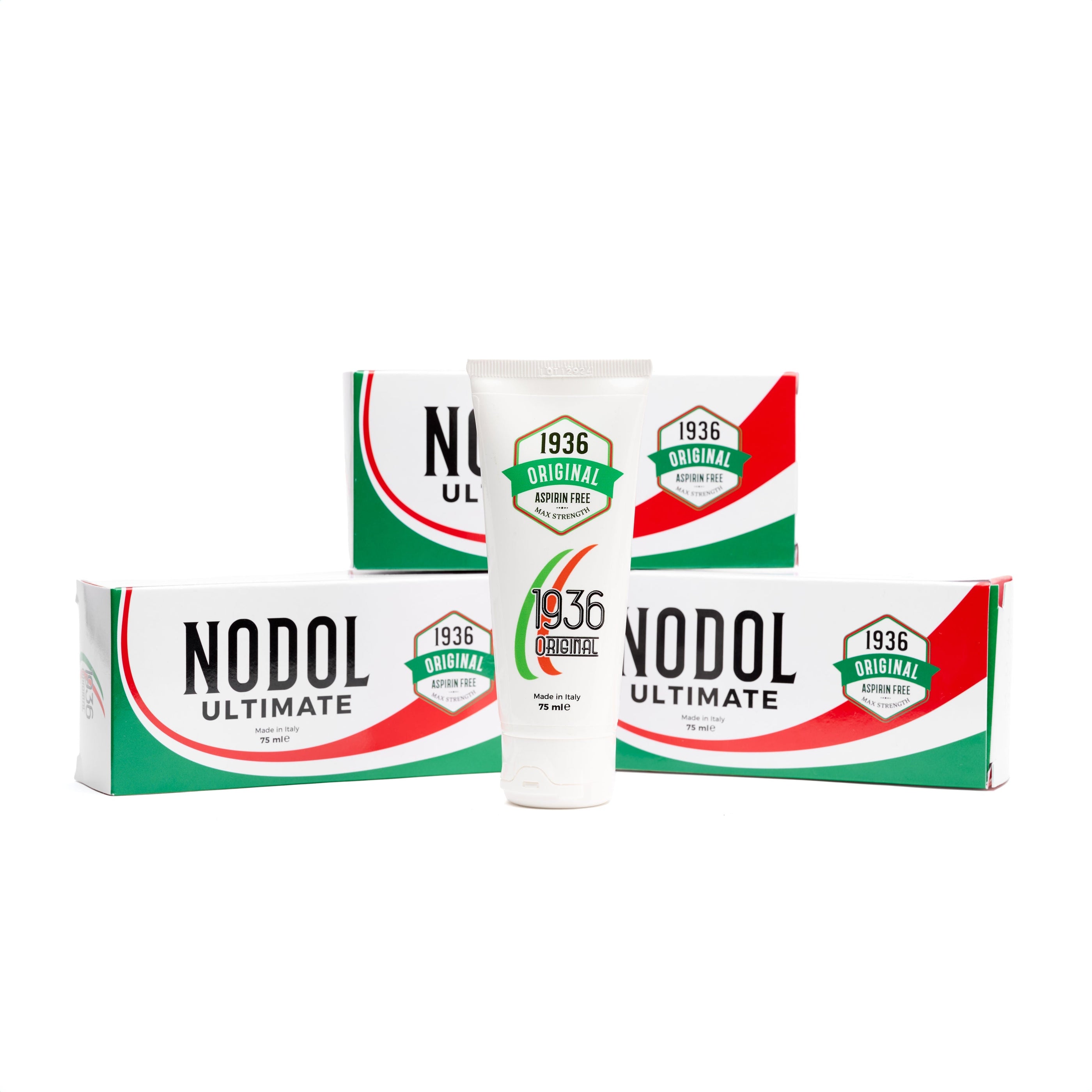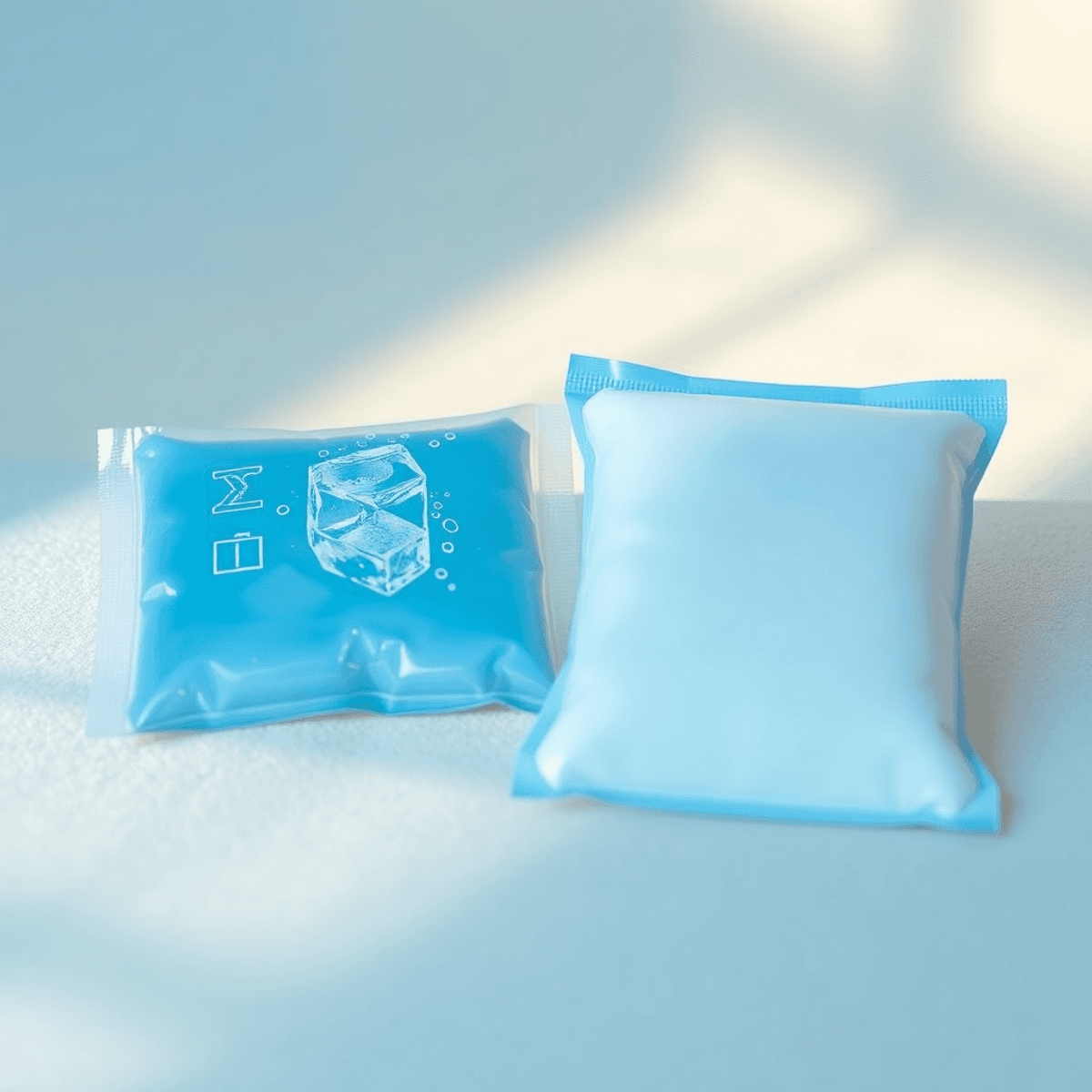Aspirin-Free Pain Relief: Tips and Tricks for Lasting Comfort

Introduction
Finding ways to relieve pain without using aspirin can be difficult, but it can also be very rewarding. If you're someone who can't tolerate aspirin, the usual methods of managing pain might not work for you, which is why it's important to find other effective options.
In this article, we'll examine various pain relief methods that don't involve aspirin. These alternatives are specifically designed for individuals who want to find comfort without the risk of experiencing negative reactions.
It's essential to understand the wide range of non-aspirin choices available in order to manage pain safely and effectively. Whether you're dealing with headaches, muscle soreness, or chronic conditions such as arthritis, there are many alternatives out there that can help relieve your discomfort.
The main point of this guide is to show you that there are plenty of ways to manage pain without relying on aspirin. This ensures both comfort and safety for those with intolerance issues.
Throughout this article, we will explore different medications and lifestyle changes that can assist in managing your pain. Our goal is to provide you with the information needed to make informed decisions about your journey towards finding relief from discomfort.
Understanding Aspirin Intolerance
Aspirin intolerance is a condition where individuals exhibit adverse reactions to aspirin, a common medication used for pain relief and anti-inflammatory purposes. Causes of this intolerance can be linked to the body's inability to process aspirin properly, leading to unwanted side effects.
Symptoms of Aspirin Intolerance
Symptoms of aspirin intolerance often manifest as:
- Asthma attacks: Individuals may experience difficulty breathing or an increase in asthma symptoms.
- Hives: Itchy, swollen welts on the skin can occur after taking aspirin.
- Gastrointestinal issues: Some people report nausea, vomiting, or abdominal pain.
These symptoms significantly affect an individual's ability to use aspirin as a pain management tool. People with aspirin intolerance must seek alternative methods for managing pain effectively. The presence of such symptoms can complicate finding suitable pain relief options and necessitate exploring non-aspirin alternatives.
The impact on pain management is profound. With the need to avoid aspirin, individuals may have to rely on different medications or treatments that do not trigger these adverse reactions. Exploring options like acetaminophen, NSAIDs without aspirin, or topical analgesics becomes crucial for those seeking comfort and relief from pain without risking further health complications due to aspirin intolerance.
1. Acetaminophen: A Safe Alternative
Acetaminophen for pain relief is a widely recognised and effective non-aspirin option, offering a safe choice for those with aspirin intolerance. Known for its efficacy, acetaminophen addresses various pain types without the risks associated with aspirin.
This medication comes in several formulations, catering to diverse needs:
- Tablets: Ideal for adults seeking convenient, on-the-go solutions.
- Liquids: Suitable for children or individuals who have difficulty swallowing pills.
- Powders: Provides an alternative form that can be mixed with liquids.
When considering dosage, it's crucial to adhere to recommended guidelines. For adults, the typical dose is 500 mg to 1000 mg every four to six hours as needed, not exceeding 4000 mg in a day. Always consult with a healthcare provider to determine the appropriate dosage tailored to your specific needs.
Acetaminophen's versatility shines in its effectiveness against a wide range of ailments:
- Headaches: Offers rapid relief from tension and migraine headaches.
- Muscle Aches: Eases discomfort from overexertion or muscle strain.
- Arthritis: Reduces pain and improves mobility in those suffering from osteoarthritis.
By choosing acetaminophen, individuals can manage their pain effectively while avoiding the adverse effects associated with aspirin-based treatments.
2. Nonsteroidal Anti-Inflammatory Drugs (NSAIDs) for Pain Relief
When looking for pain relief options other than aspirin, Nonsteroidal Anti-Inflammatory Drugs (NSAIDs) are often the go-to choice. These powerful medications are effective in reducing inflammation and relieving pain. They work by inhibiting specific enzymes responsible for causing inflammation and discomfort in the body.
Comparison Between Ibuprofen and Naproxen
Two commonly used NSAIDs are ibuprofen and naproxen, both of which are effective in managing different types of pain:
1. Effectiveness
Ibuprofen is often preferred for short-term pain relief due to its faster onset, while naproxen offers longer-lasting effects, making it suitable for chronic conditions.
2. Side Effects
Both medications can cause digestive issues; however, naproxen is associated with a slightly higher risk of gastrointestinal side effects.
3. Recommended Dosages
Ibuprofen is typically taken every 4-6 hours as needed, whereas naproxen is usually administered every 8-12 hours.
Over-the-Counter vs. Prescription Options
NSAIDs can be obtained in both over-the-counter (OTC) and prescription forms:
- Over-the-Counter Options: Ideal for mild to moderate pain, ibuprofen and naproxen can be purchased without a prescription.
- Prescription Strengths: For more severe pain, healthcare providers may prescribe higher doses or alternative NSAID formulations.
By understanding the differences between ibuprofen and naproxen, as well as their availability in OTC and prescription forms, you can make informed decisions about your pain management strategy. It's important to consider potential side effects and consult with a healthcare professional if needed to ensure optimal relief.
3. Topical Analgesics: Targeted Relief Without Aspirin
Topical analgesics offer a focused approach to pain management, ideal for those seeking relief without the systemic side effects often associated with oral medications. Lidocaine patches and capsaicin cream are two popular options in this category, providing localised pain relief by directly targeting the source.
1. Lidocaine Patches
These patches contain lidocaine, an anaesthetic that works by numbing the area to which it’s applied. This numbing action blocks the nerve signals that transmit pain, offering significant relief for conditions such as post-herpetic neuralgia or localised muscle pain. Lidocaine is applied directly to the skin, allowing for precise treatment of specific areas without affecting the entire body.
2. Capsaicin Cream
Derived from chilli peppers, capsaicin cream provides pain relief through a different mechanism. It desensitises nerve endings over time by depleting substance P, a neurotransmitter that communicates pain signals to the brain. This gradual process makes capsaicin particularly effective for chronic conditions like arthritis or diabetic neuropathy.
Both of these topical treatments are accessible over the counter and can be easily incorporated into your daily routine. They offer a practical alternative for individuals who may be sensitive to aspirin or other oral medications, ensuring targeted relief and enhanced comfort.
Complementary Approaches to Enhance Pain Management Without Aspirin
Exploring complementary approaches can offer significant advantages in managing pain without aspirin.
Physical Therapy
Physical therapy plays a crucial role in developing personalised treatment plans. These plans often include a combination of methods such as exercise therapy and manual techniques, tailored to address specific pain issues. Engaging in physical therapy for pain management can help:
- Improve mobility
- Strengthen muscles
- Reduce stiffness
Ultimately, these benefits contribute to long-term relief.
Acupuncture
Acupuncture emerges as a powerful alternative treatment. This ancient practice involves inserting thin needles into specific points on the body to stimulate natural healing processes. Acupuncture has been shown to be particularly beneficial in alleviating chronic pain conditions like fibromyalgia or migraines. Many individuals report substantial improvements in their pain levels and overall well-being after undergoing regular acupuncture sessions.
Massage Therapy
Massage therapy is another effective option for those seeking non-aspirin pain relief solutions. The benefits of massage therapy extend beyond mere relaxation; it promotes improved circulation, relieves muscle tension, and induces a state of relaxation that can be crucial for managing chronic pain. Regular massage sessions can enhance your body's ability to manage stress and reduce discomfort associated with various types of pain.
Together, these complementary therapies offer valuable avenues for those looking to manage pain holistically. By integrating physical therapy, acupuncture, and massage into your routine, you may find not only an improvement in your physical condition but also an enhancement in your quality of life. These approaches emphasise the importance of addressing the root causes of pain rather than just masking symptoms, providing a more sustainable path toward comfort and relief.
Lifestyle Changes for Long-Term Pain Relief Without Aspirin
If you're looking to manage pain without relying on aspirin, it's important to take a holistic approach. This means making changes to your diet and incorporating physical activity into your routine.
Eat an Anti-Inflammatory Diet
One of the key ways to naturally manage pain and inflammation is by following an anti-inflammatory diet. This type of diet focuses on consuming foods that are known to reduce inflammation in the body. Here are some foods you should include:
- Fruits and Vegetables: These are packed with antioxidants, which can help reduce inflammation.
- Whole Grains: Foods like brown rice, quinoa, and whole wheat bread provide fibre and essential nutrients that support overall health.
- Lean Proteins: Opt for sources like fish, chicken, and legumes that offer necessary nutrients without added saturated fats.
On the other hand, it's best to avoid processed foods that are high in sugar or unhealthy fats. These types of foods can actually make inflammation worse and contribute to chronic pain.
Stay Active with Gentle Exercises
In addition to dietary changes, incorporating gentle yet effective exercises into your routine is also important for managing pain. Regular physical activity can help improve circulation, strengthen muscles, and reduce stiffness. Here are a couple of exercises you might consider:
- Yoga: This practice combines flexibility, balance, and strength training, making it beneficial for joint health and promoting mindfulness.
- Swimming: As a low-impact exercise, swimming supports muscle tone and cardiovascular health without putting stress on your joints.
Not only do these activities promote physical well-being, but they also have positive effects on mental health by reducing stress levels associated with chronic pain conditions.
By making these lifestyle modifications—such as following an anti-inflammatory diet and staying active with gentle exercises—you can find long-term relief from pain while minimising your dependence on aspirin-based medications.
Consulting Your Healthcare Provider About Non-Aspirin Medications
Engaging with a healthcare provider is crucial when seeking effective non-aspirin medications for pain relief. Chronic pain management often requires a tailored approach, and understanding the array of prescription alternatives available can help you avoid aspirin-based treatments.
Prescription Alternatives:
- Gabapentin: Often prescribed for nerve-related pain. It works by stabilising electrical activity in your brain and affecting the way your nerves send messages to your brain.
- Duloxetine: Commonly used for chronic musculoskeletal pain, it is effective in treating conditions like fibromyalgia and osteoarthritis.
- Corticosteroids: These are powerful anti-inflammatory medications that can be prescribed for short-term use to manage severe inflammation-related pain.
Open Discussions with Healthcare Providers:
Having an open dialogue with your healthcare provider ensures you can explore the suitability and potential benefits/risks associated with different non-aspirin options. Here are some tips to facilitate these discussions:
- Prepare Questions: Develop a list of questions about alternative medications, including how they work, possible side effects, and how they fit into your overall treatment plan.
- Share Your History: Clearly communicate any previous reactions to medications and your current health status to help your provider make informed decisions.
- Discuss Lifestyle Changes: Inform your provider about any lifestyle modifications you are considering or have already implemented, as these can impact medication efficacy.
- Clarify Concerns: If you have concerns about any recommended medication, express them openly. Understanding potential risks allows you to weigh them against the expected benefits.
Collaborating with a healthcare provider not only helps in selecting appropriate medications but also supports a comprehensive strategy for managing pain effectively without reliance on aspirin.
Real-Life Experiences: Success Stories With Non-Aspirin Treatments
Exploring positive experiences with non-aspirin treatments can provide valuable insights and hope for those seeking alternative pain relief methods. Here, we share inspiring testimonials from individuals who have successfully managed their pain through a combination of therapies.
Knee Pain Relief Through Acetaminophen and Physical Therapy
One individual suffering from chronic knee pain found significant relief by incorporating acetaminophen into their daily regimen. This was complemented by regular physical therapy sessions tailored to their specific mobility needs. The synergy between medication and targeted exercises not only alleviated pain but also improved overall joint function and quality of life.
Back Pain Management with Capsaicin Cream
Another success story comes from someone dealing with persistent back pain, who turned to topical applications like capsaicin cream. Applying the cream consistently led to a reduction in discomfort, allowing them to engage more actively in daily activities. They reported that the cream provided localised relief without the systemic side effects they had previously experienced with oral medications.
Migraine Relief Through Acetaminophen and Acupuncture
A person with migraine headaches discovered that combining acetaminophen with acupuncture sessions significantly reduced both the frequency and severity of their attacks. The holistic approach focused on balancing lifestyle modifications alongside medical treatments, demonstrating the potential for integrative strategies in managing complex pain conditions.
These testimonials underscore the effectiveness of non-aspirin options in providing lasting comfort. By tailoring treatment plans to individual needs, combining pharmaceuticals like acetaminophen with complementary therapies such as physical therapy and topical analgesics, many have found pathways to improved well-being without relying on aspirin-based solutions. This personalised approach can inspire others to explore a diverse range of possibilities for effective pain management.
Conclusion: Embracing A Future Of Pain Relief Beyond Aspirin
Finding ways to relieve pain without using aspirin opens up many options for long-lasting comfort. By looking into other choices besides aspirin, you can effectively manage your pain without dealing with the problems that come with being intolerant to aspirin. Acetaminophen, NSAIDs, and topical analgesics are different types of medications that can be used based on what works best for you.
Getting advice from experts will help you choose the right treatments. Healthcare professionals can give personalised recommendations, showing you how to combine medicine with lifestyle changes and alternative therapies. Here are some things you can do to actively participate in managing your pain:
- Talk to healthcare providers about non-aspirin options
- Try physical therapy, acupuncture, or massage for additional relief
- Follow an anti-inflammatory diet and maintain a regular exercise routine
Take this chance to improve your health and well-being. Step into a future where pain relief is easy to find and effective without relying on aspirin.
FAQs (Frequently Asked Questions)
What is aspirin intolerance?
Aspirin intolerance is a condition where individuals exhibit adverse reactions to aspirin. Symptoms can include asthma attacks, hives, or gastrointestinal issues.
What are some effective alternatives to aspirin for pain relief?
Some effective alternatives to aspirin include acetaminophen, nonsteroidal anti-inflammatory drugs (NSAIDs) like ibuprofen and naproxen, topical analgesics such as lidocaine patches and capsaicin cream, and complementary approaches like physical therapy and acupuncture.
How do ibuprofen and naproxen compare in terms of effectiveness?
Ibuprofen is often preferred for short-term pain relief due to its faster action, while naproxen may be better for longer-lasting relief. Both medications have their own side effects and recommended dosages.
Can lifestyle changes help manage pain without aspirin?
Yes, lifestyle changes such as eating an anti-inflammatory diet and staying active with gentle exercises can significantly help in managing pain naturally without relying on aspirin.
What role does physical therapy play in pain management?
Physical therapy plays a crucial role in developing personalised treatment plans that enhance mobility, strengthen muscles, and alleviate pain through targeted exercises and techniques.
Why is it important to consult a healthcare provider about non-aspirin medications?
Engaging with a healthcare provider is crucial when seeking non-aspirin medications to ensure safe usage, proper dosing, and to discuss potential interactions with other treatments or conditions.












